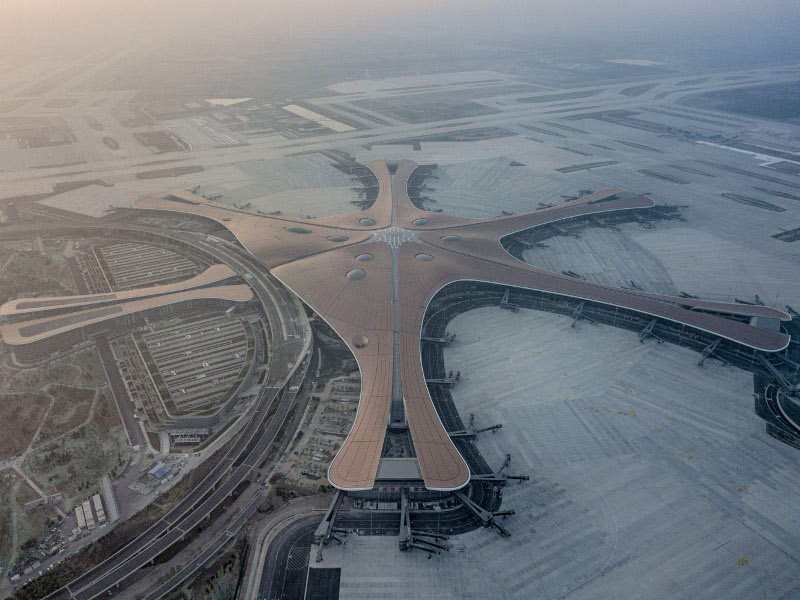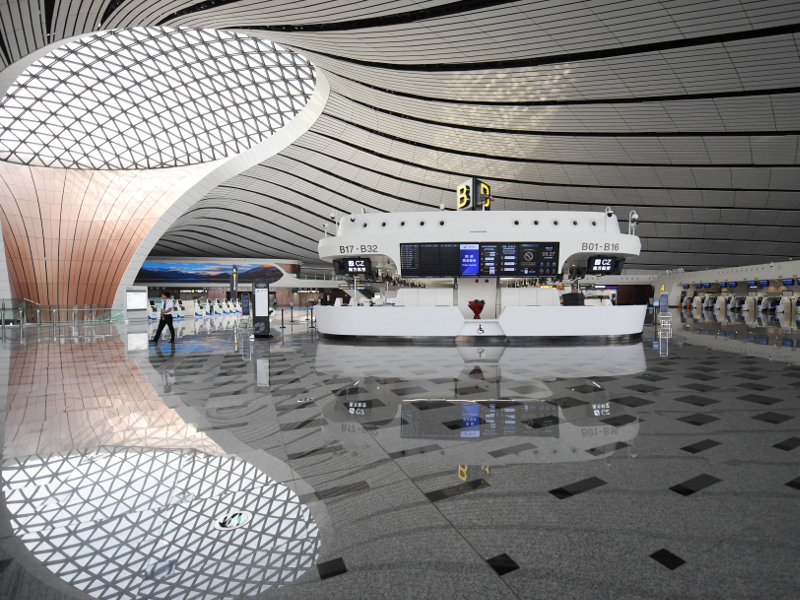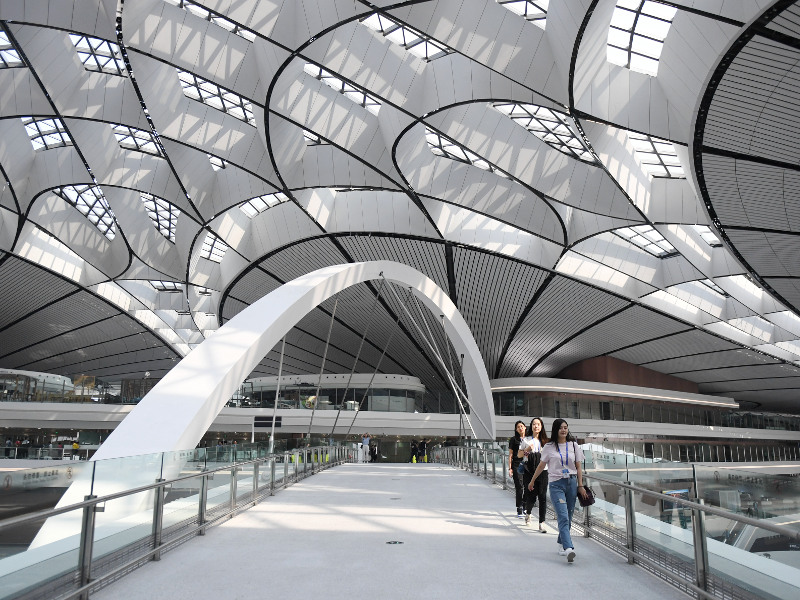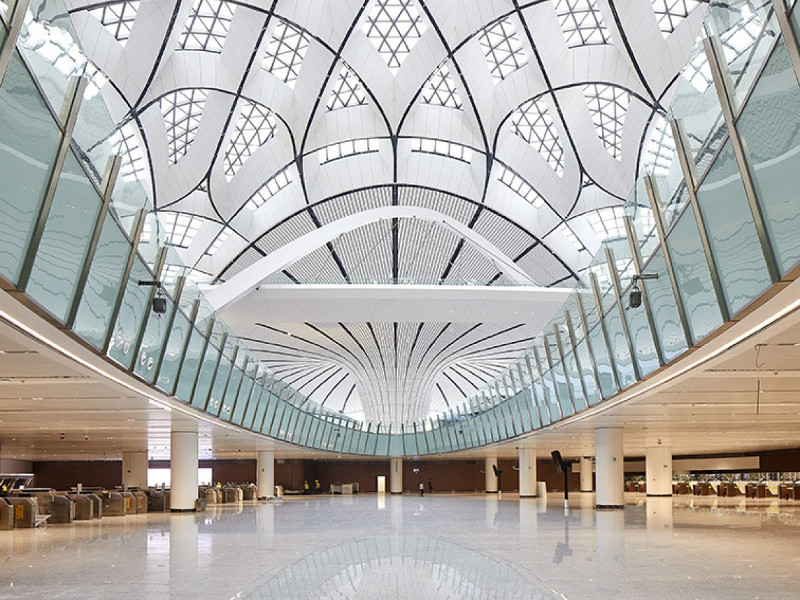Beijing Daxing is the second international airport in Beijing, China, and the world’s largest single-terminal airport. Located in the city’s Daxing district, the airport was inaugurated in September 2019.
It was developed by Beijing New Airport Construction Headquarters, using an estimated investment of $17.47bn. It is expected to reduce traffic from the existing Beijing International Airport.
By 2025, the new airport will be capable of handling 72 million passengers a year. An airport expansion project is planned in the future, which will further increase capacity to 100 million passengers a year.
Design of Beijing Daxing International Airport
The Beijing Daxing International Airport covers an area of 700,000m² and includes one terminal building with four runways. The airport’s design is based on the traditional Chinese architecture principle, which interconnects various spaces around a common courtyard.
The terminal is a radially designed building with six arms extending from its centre. This design earned the airport the nickname ‘starfish’.
A multi-layered courtyard is located at the centre of the terminal and includes five piers that house all passenger services and amenities.
The radial configuration of the terminal allows 79 gates with aerobridges to be accommodated simultaneously, which aids the rapid flow of traffic. It also allows the maximum number of aircraft to be parked at a reasonable distance from the centre of the building.
Spaces within the terminal have been designed to allow passengers to reach their departure gates via the central courtyard. The design drastically reduces passenger travel time to less than eight minutes and also eliminates the need for automated shuttle trains.
Structural features of Beijing Daxing International Airport terminal
The terminal features structural spans spaced at a distance of 100m. The design creates large open public spaces and provides flexibility for future internal reconfiguration.
The vaulted roofs on each of the six arms support the terminal structure at the ground level. They also enable natural light to enter the building, aided by a series of linear skylights.
A navigation system guides passengers to their departure gates.
Sustainability features of Beijing Daxing International Airport
The terminal roof is installed with photovoltaic modules, enabling the airport to generate at least 10MW of solar power.
The airport’s centralised heating system includes a heat pump system that sources heat from the ground and is capable of supplying energy to approximately 232,257m2. A waste heat recovery system is also part of the heating system.
The rainwater collection and water management system installed at the airport allow for the storing, permeation and purification of up to 2.8 million cubic metres of rainwater. The system directs the water towards wetlands, lakes and streams, thereby preventing flooding and the region’s heat island effect.
The design integrates energy-saving green concepts and traditional Chinese architecture, which will further reduce the carbon footprint of the airport.
Contractors involved
The airport masterplan was prepared by Netherlands Airport Consultants, while Zaha Hadid Architects and ADP Ingeniérie were the architects.
The façade was designed by XinShan Curtainwall and Beijing Institute of Architectural Design.
Arup was subcontracted by Beijing Institute of Architectural Design as the fire engineering consultant, while China IPPR International Engineering was responsible for security system and baggage system designs.
Other contractors involved in the project include China Electronics Engineering Design Institute, Civil Aviation Electronic Technology, The Third Rail Survey and Design Institute Group Corporation, Beijing City Construction Design Research General Institute and Beijing General Municipal Engineering Design & Research Institute.
Beijing TsingHua TonHeng Urban Planning and Design Institute, Central Academy of Fine Arts, Dtree, Lea-Elliot, Lighting Design Studio, East Sign Design & Engineering, BuroHappold and Lead8 were also involved in the project.
Suppliers include Xsight Systems, T-Systems, Schindler, Thales, Beijing EasySky Technology and Oasys.
Beijing Daxing International Airport location
The Beijing Daxing International Airport is situated 46km south of the city centre in the Daxing district between Beijing and Langfang in Hebei Province. It is located 26km from Langfang city centre.
The airport is well connected with the country’s transport network through rail, road and subway, making it easy to access.





